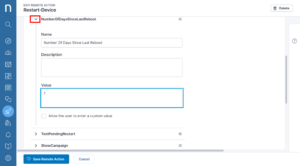How To Improve Device Performance with Scheduled Device Restart with Nexthink
When devices are not rebooted frequently, it can adversely impact the Logon and Extended logon duration and affect device memory and device performance. This can lead to missing critical patches and Windows updates causing performance and security issues, Hence, scheduled restart of the device once in 7 days is a recommended best practice.
Check out how To Improve device performance with scheduled device restart with Nexthink.
Let us look at How to Improve Device Performance by doing a scheduled restart with Nexthink.
We start off by configuring the Remote action for Restart Device by importing the content pack from the library. Next, edit the campaign associated with the restart device remote action and change the content as per the requirement and preview the campaign.

Step 1: Navigate to the Remote Actions tab on the left panel and click on Manage remote actions.

Step 2: Enter Restart in the search box to identify the Restart-Device remote action.

Step 3: Click on Configure option to modify the remote action with the necessary criteria.
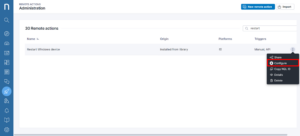
Step 4: Click on the Script tab and navigate to the parameters section.

Step 5: Click on the Drop down of the NumberOfDaysSinceLastReboot and enter the number 7 in the value box.
Step 6: Next, under the General tab enable the Schedule option.

Step 7: Here, click on Add Schedule to add the scheduling criteria.
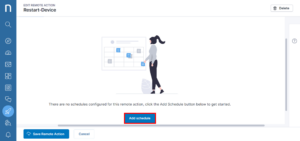
Step 8: Click on Add to save the Scheduling Criteria.
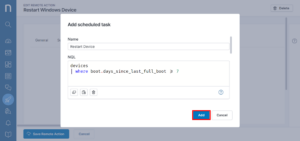
Step 9 : Once the schedule is added, click on Save Remote Action.
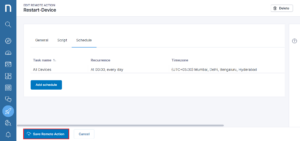
As can be seen, we have successfully triggered schedules restart for devices not restarted in the last 7 days, This restart improves device performance, you can track the status by creating dashboards as shown below.
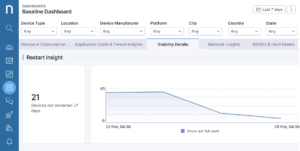
Ready to learn how Nexthink could help your team find and fix issues faster? Request a demo today.
Related posts:
- How to Perform a Proactive System Cleanup to Improve System Performance with Nexthink
- How to Keep Your Digital Devices Current | Engagement & Automation
- Let’s Break Down Marble Testing Redux-Observable Epics
- How to Ensure SCCM Client Compliance on All Endpoints with Nexthink
